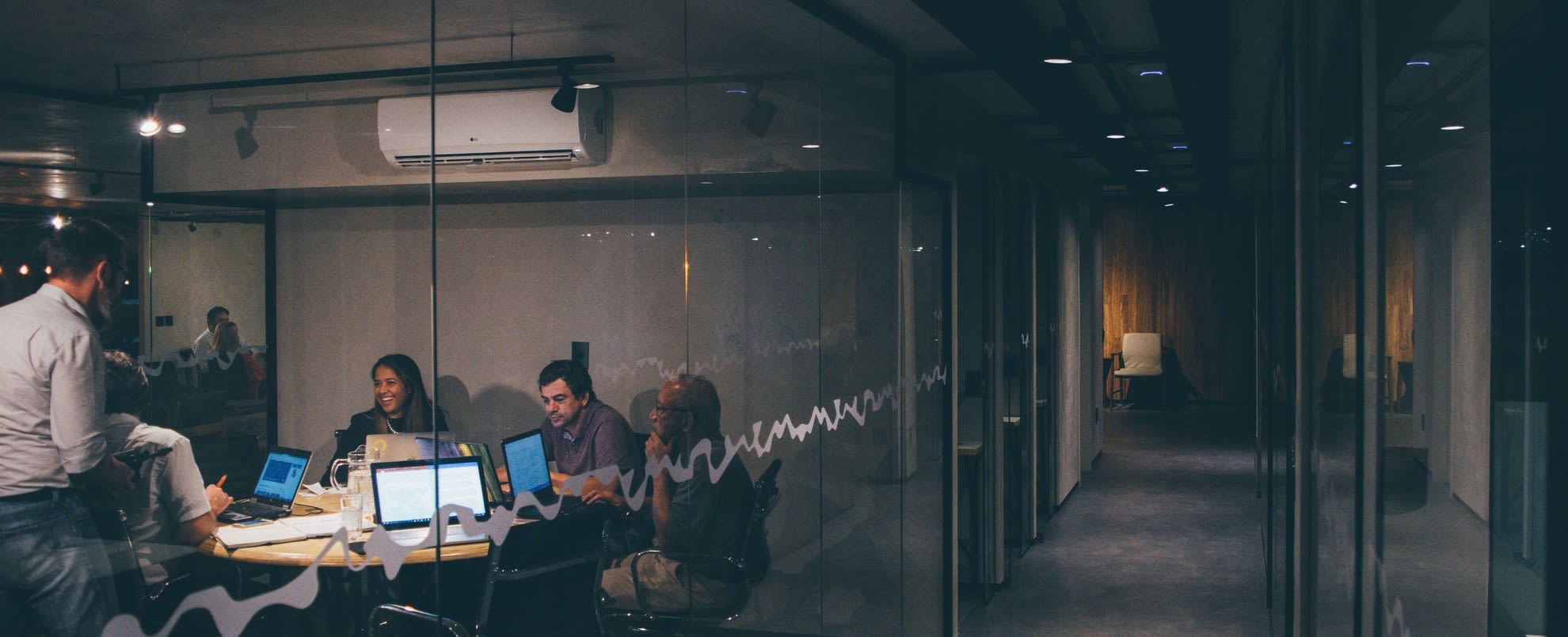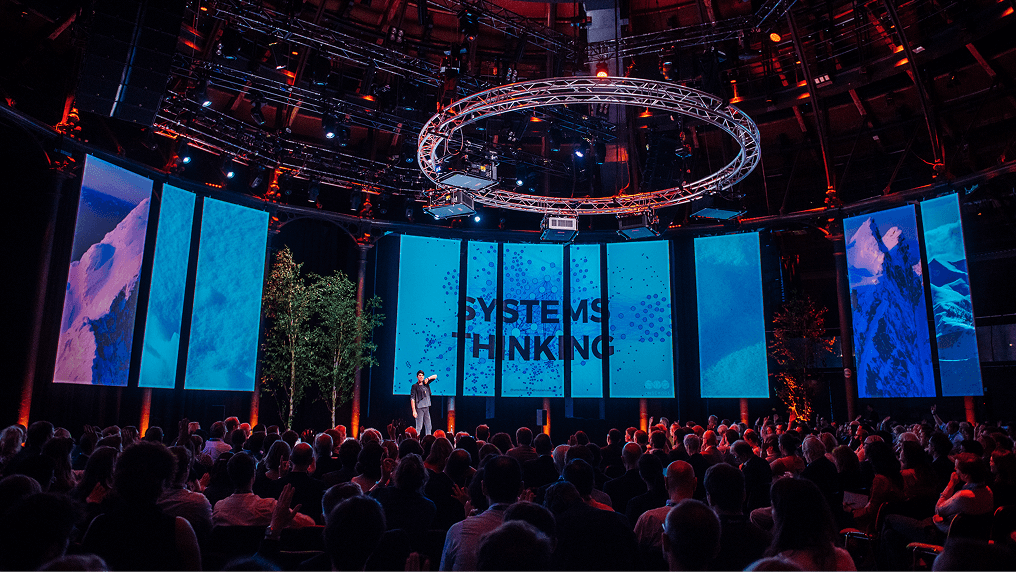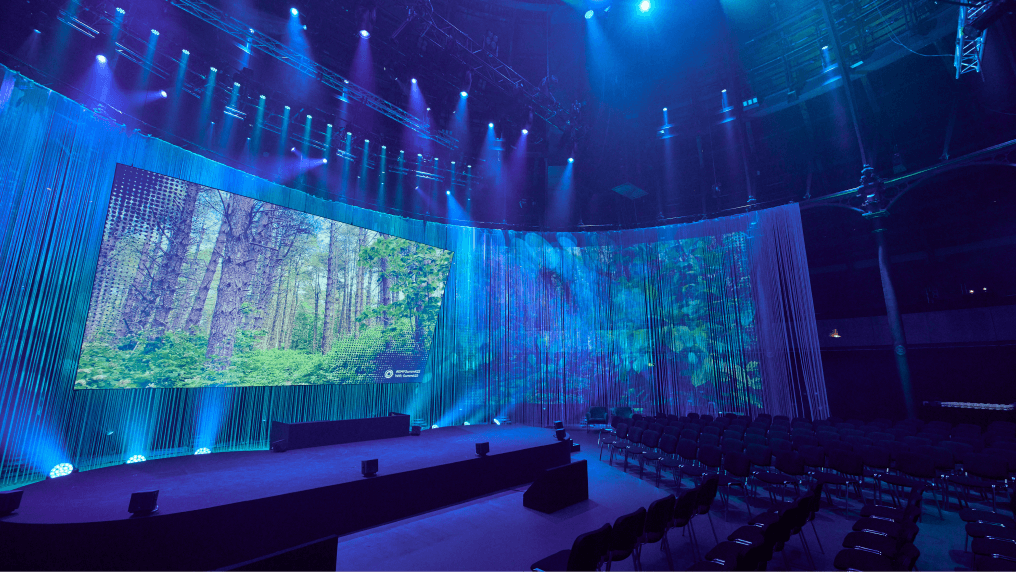The circular economy is a new way of designing, making, and creating value that benefits business, society, and the environment. This deep dive is designed to help you bring circular economy ideas in your organisation.
Here, at the Ellen MacArthur Foundation, we have witnessed a wide variety of circular economycircular economyA systems solution framework that tackles global challenges like climate change, biodiversity loss, waste, and pollution. It is based on three principles, driven by design: eliminate waste and pollution, circulate products and materials (at their highest value), and regenerate nature. initiatives within organisations. We have found that while systemic thinking and collaboration are key to accelerating the transition, each organisation needs to find what works best for their specific circumstances.
Why should you be excited about the circular economy?
From improving company profile, to delivering tangible solutions for business, environment and society, to future proofing your business, the opportunities of a circular economy are huge.
Watch circular economy champions in Intesa Sanpaolo, Philips, H&M Group, Solvay, and Danone share why they are personally excited about the circular economy.
Pitch circular economy ideas within your organisation
One of the key aspects of a circular economy is that it requires collaboration and moves beyond working in silos.
You will need to work with your team members, colleagues who work in other areas, and management to bring circular ideas into your organisation.
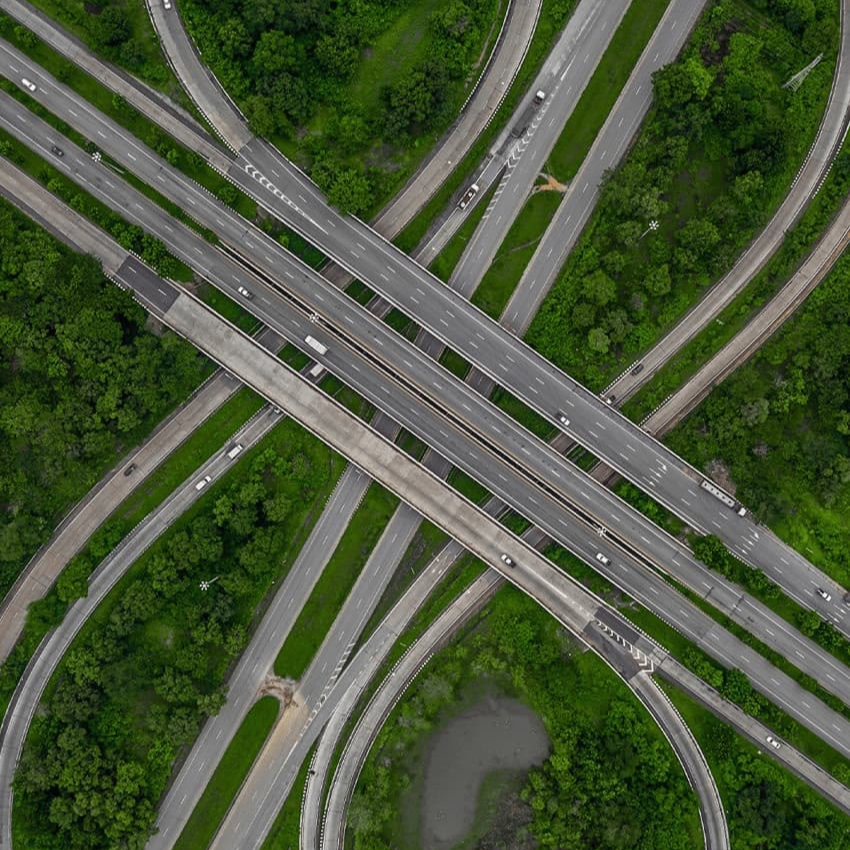
Three questions to help you prepare a circular economy pitch
Who do you want to influence?
Think about what's on their agenda and what objectives and priorities they need to address, as well as what motivates them personally and professionally.
What's the context?
Look into your company's values and strategic goals and think how the circular economy could help you enact and deliver. Analyse external companies by looking at industry trends and competitors, as well as risks within your supply chain. The circular economy might be a way to get ahead in your field.
What do you want to do practically?
A circular economy is all about practical solutions to existing problems and realising new opportunities. Include top line ideas on how circular economy ideas can help with existing challenges and opportunities in the organisation. Even more importantly, think of a small scale, localised trial or pilot project to get things started.

Introduce the circular economy to your colleagues
Raise awareness of the concept within your organisation
To implement circular economy ideas you will need to collaborate with different departments and functions. People will respond better and be more willing to get involved if they have a clear understanding about the circular economy and believe that it is the right approach for your business.
This short introductory video (3:48) explores how through a change in perspective we can re-design the way our economy works - designing products that can be 'made to be made again' and powering the system with renewable energy. It questions whether with creativity and innovation we can build a restorative economy.
Explain the circular economy and how society can re-think progress
'Re-Thinking Progress' explores how through a change in perspective we can re-design the way our economy works - designing products that can be 'made to be made again' and powering the system with renewable energyrenewable energyEnergy derived from resources that are not depleted on timescales relevant to the economy, i.e. not geological timescales.. It questions whether with creativity and innovation we can build a restorative economy.
How companies communicate circular economy ideas internally
Learn tips from companies to engage your employees on circular economy.
Watch the representatives from Intesa SanPaulo, H&M Group, Danone, Renault, and Solvay discuss how they engage their employees on circular economy topics.

Bring people together to discuss circular economy topics
If we bring people together to share their stories and collaborate, we solve problems better and faster.
Learning about the circular economy works best when you put your theory into practice - and in return learn from your experience. This underpins our iterative approach.
If you work in product design...
Look into your design process
Design in the circular economy
A circular economy extracts the greatest value out of resources by keeping products, components, and materials at their highest value at all times. By rethinking design, your business can capture and optimise the business value of circularity.
The three principles of a circular economy - eliminating waste and pollution, circulating products and materials, and regenerating nature, should be embedded in the design process from the very beginning.
Circular design process
The circular design process comprises four stages and is informed by approaches such as design thinking and human-centred design.
Understand - Get to know the user and the system.
Define - Put into words the design challenge and your intention as the designer.
Make - Ideate, design & prototype as many iterations and versions as you can.
Release - Launch your design and build your narrative - create loyalty in customers and deepen investment from stakeholders by telling a compelling story.
Circular design approach
Circular design considers not only the user, but the entire system within which the design will exist. This means understanding the impact of our design on stakeholders we may never have previously thought of, and building in feedback loops to help identify and address the unintended consequences of our design decisions. At every stage of the design process we need to both zoom in on the user needs and zoom out to consider the systemic implications, oscillating continuously between these two equally critical perspectives.
Circular design strategies
There is a variety of design strategies to help you design with the three circular economy principles in mind. These strategies include:
Designing for inner loops
Moving from products to services
Extending product life
Making safe and circular material choices
Dematerialising
Making products modular
Why design matters
Tim Brown, CEO of IDEO, explains the circular economy and why designers need to get involved.
If you are in a customer facing role...
Rethink your business model
Create new business models to keep products in use for longer.
New types of business models can be used to ensure that products return to the supply chain, and that resource use is optimised. There is not much value in products that are designed for reusereuseThe repeated use of a product or component for its intended purpose without significant modification. or recovery if users just discard them or keep them in a drawer for years.
Customers' perception of value is changing as well. They don't always expect or want to own a product. What they want is access to the product when they need it, or the results that a product can offer.
Case study: Bundles
Take back your products
Reverse logistics is a key building block of a circular economy.
Most supply chains follow a linear model: products are transported to customers but usually there is no easy way to get them back to the producers. To create value from products and materials after their use, efficient reverse logisticsreverse logisticsSupply chains dedicated to the reverse flow of products and materials for the purpose of maintenance, repair, reuse, refurbishment, remanufacture, recycling, or regenerating natural systems. and treatment methods are needed to get them back to the market.
One of the main challenges in retrieving sold products is persuading the customer to return it. After selling a physical product, the challenge for the manufacturer is to get it back in order to take advantage of its retained value.
Case study: Mazuma Mobile
Engaging customers to return products
Logistics
The logistics used will depend on the recoverable value of the items. Customers are more willing to take part in the logistics of returning an item if they perceive it to have value. Typically, logistics are made easier by collaboration across several organisations, or by making use of existing infrastructure.
Incentives
Incentives can be used to motivate customers to return items. The key motivators are reward and convenience. Make the product-return process convenient and customers will be more likely to use it. Equally, customers who are rewarded for returning products will be more likely to do so. In simple terms: make it easy, or make it pay.
Value of the product
Different approaches need to be considered depending on the value of the product being returned. If the value is low or inexistent, it needs to be very easy for the customer to return (such as home collection recycling). These items will generally only be recovered if the local infrastructure supports it, for example, using kerbside collection points or joint collection initiatives.
Items of medium value can be recovered using take-back programmes. One example is beverage bottle reuse (such as the models employed by Belgium, Germany, and the Netherlands). Customers return their glass bottles to collection points, which are accessible in most supermarkets, and receive a deposit in return.
When items have a high value, customers are likely to use sales or swapping methods. To optimise the value recovered from their sales, individual sellers on eBay are willing to invest a lot of time and effort in the process. This includes estimation of the resale market value, carefully considered marketing of the product, and time-consuming delivery.
Renault and Philips share their experience
Watch Markus from Philips talk about a bring-back scheme and Jean-Denis from Renault speak about the key elements of their move to circular business models.
Explore industry related opportunities
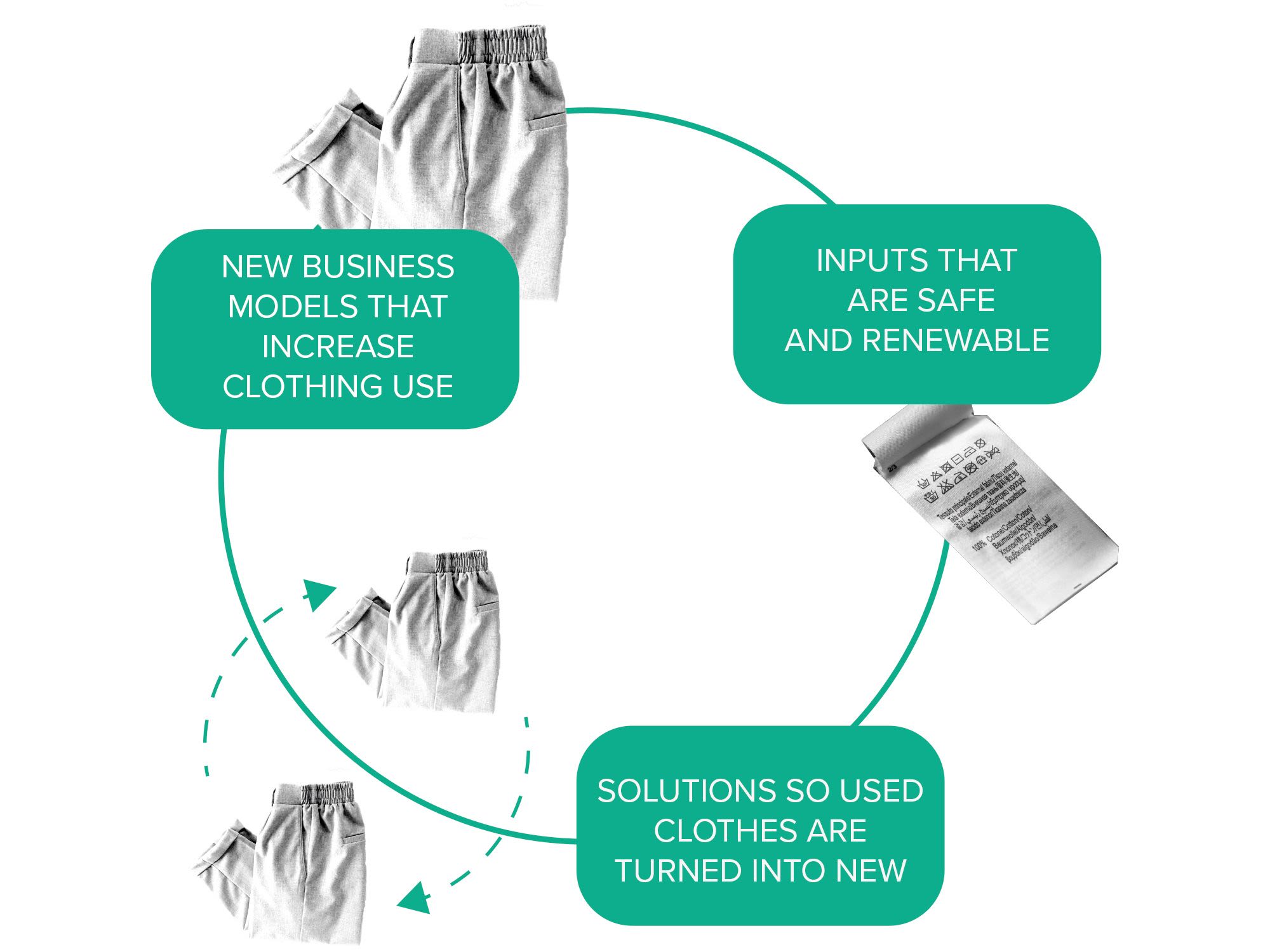
Fashion
The fashion industry holds huge potential to be part of the transition towards a more circular vision
In a circular economy, where products are created to be restorative and regenerative by design, clothes, textiles, and fibres are kept at their highest value during use and re-enter the economy after use, never ending up as waste.
If you work in the fashion industry, these three questions will help you rethink your approach to circularity:
How can you change your business model to increase clothing use?
How can you change the way you design and produce clothes to make sure that all materials are safe and renewable?
How can you take back old clothes and turn them into new?
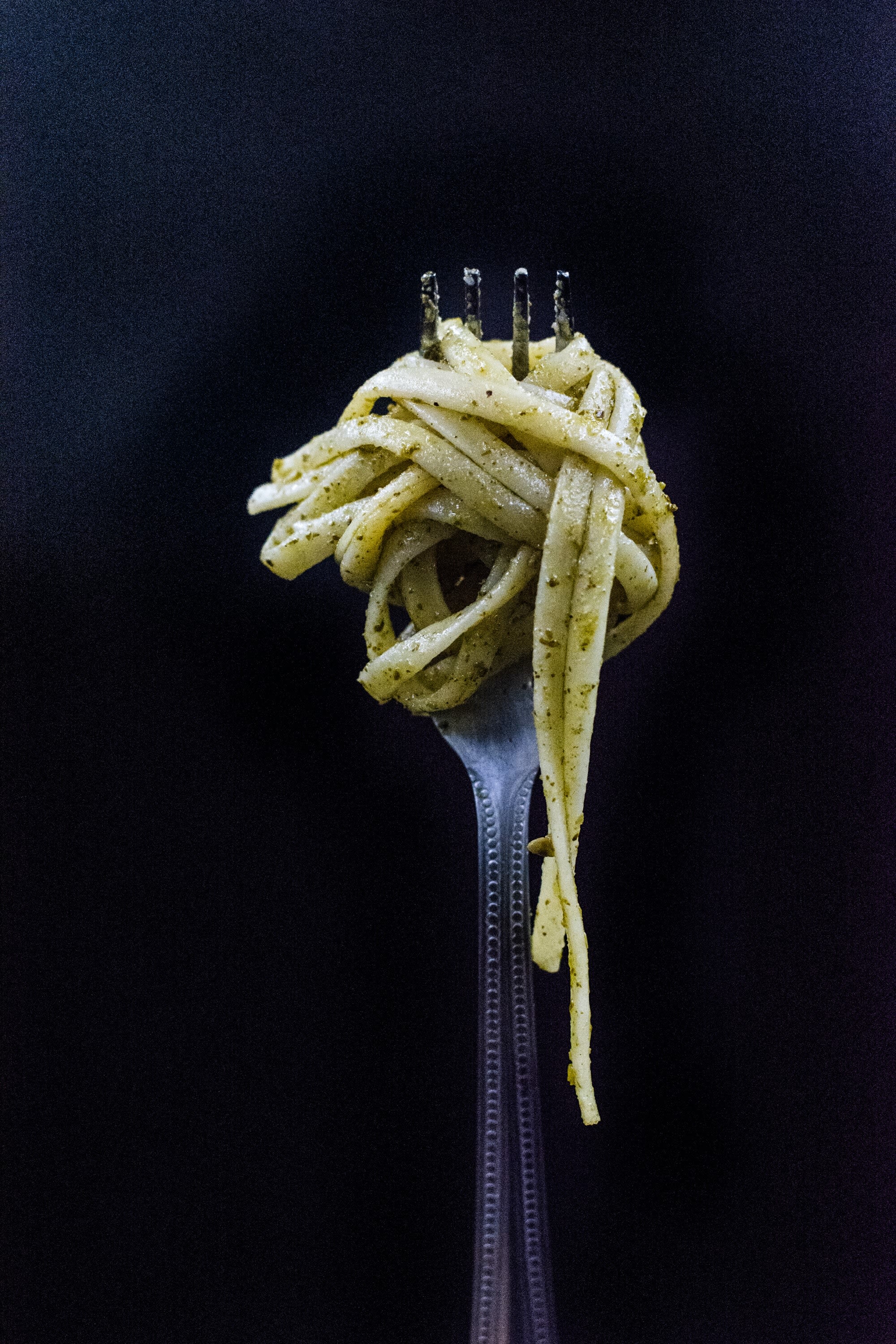
Food
The food industry is ripe for disruption. For every dollar spent on food, society pays two dollars in health, environmental, and economic costs.
The challenges of the global food system can sometimes seem daunting in their breadth and sheer complexity. But there are tremendous opportunities available to take a long-term view of the future of food and catalyse a fundamental shift in the system.
Three things to consider if your business is food based
Source food grown regeneratively, and locally where appropriate
Regenerative approaches to food production will ensure the food that enters cities is cultivated in a way that enhances rather than degrades the environment. In this context, regenerative food production is considered in a broad sense as encompassing any production techniques that improve the overall health of the local ecosystem and create other systemic benefits.
Make the most of food
Cities can play an important role in sparking a shift to a fundamentally different food system in which we move beyond simply reducing avoidable food waste to designing out the concept of ‘waste’ altogether.
Design and market healthier food products
In a circular economy, food products are designed not only to be healthy from a nutritional standpoint, but also in the way that they are produced. New innovations, products, and recipes can play their part in designing out waste. Marketing can position delicious and healthy products as easy and accessible choices for people on a daily basis. Food brands, retailers, restaurants, schools, hospitals, and other providers can reorient our food preferences and habits to support regenerative food systems.
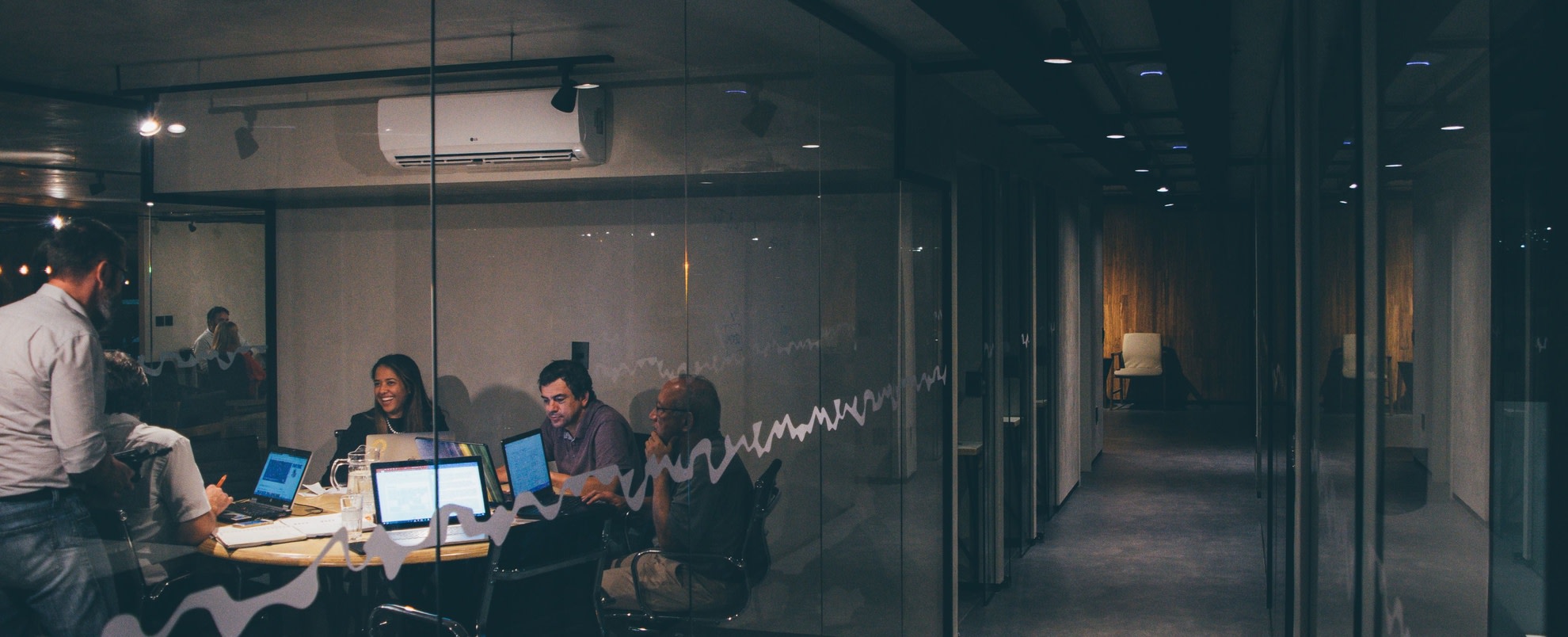
Pause for thought
What is one circular economy idea that you could bring into your organisation, starting today?
-----------------------
Funded by Eric and Wendy Schmidt Fund for Strategic Innovation
